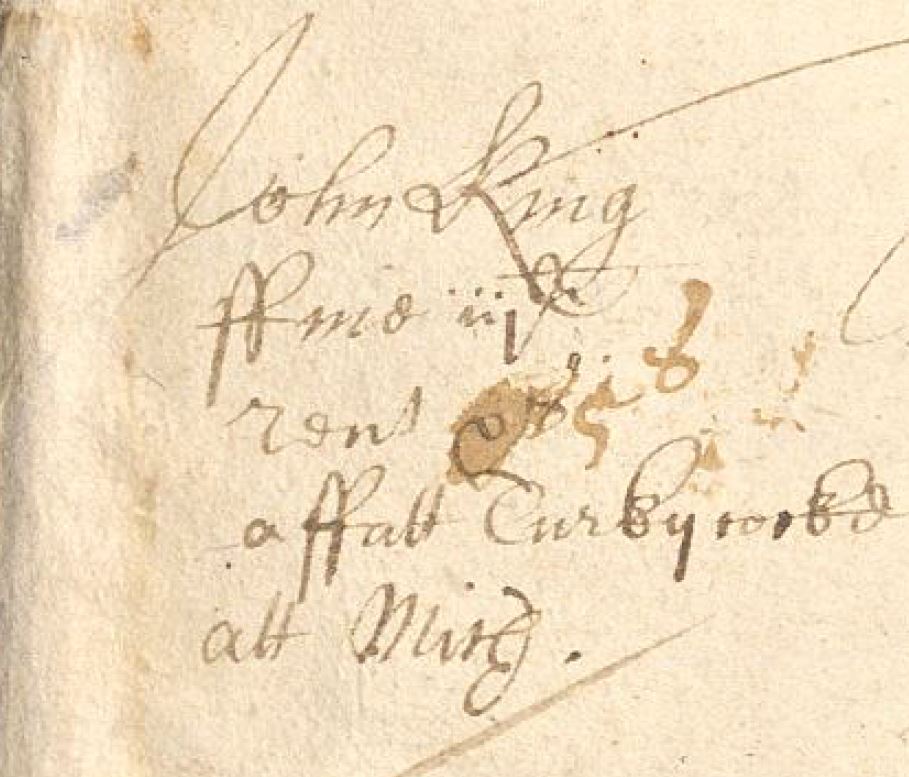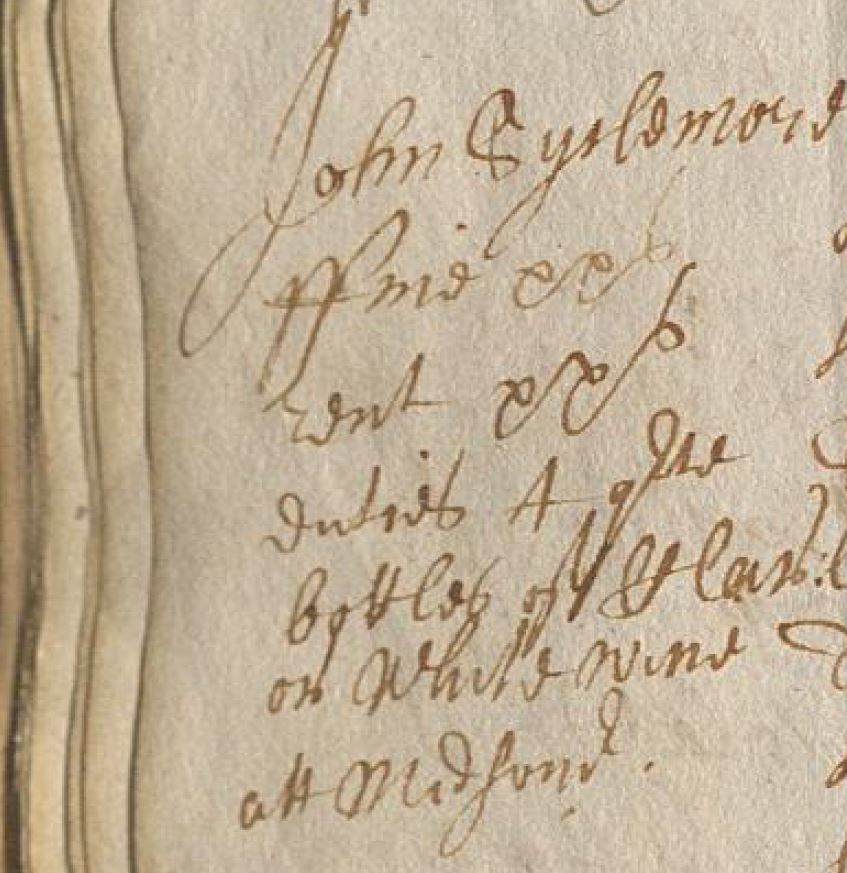
The way in which English was written and spelled in the 1600s and early 1700s was sometimes quite different from how we do it today. This transcription follows as exactly as possible the way in which this minute book was written. If you find something puzzling as you are reading it, you will probably find an explanation of it in this section. Because of this, it would be useful to read this section first, if you want to read the transcription.
Penmanship
Interestingly, the penmanship (i.e., the actual forming of the letters on the page) and spelling deteriorated as the years went on. There was a borough clerk who would probably be the one to write out the final copy of the minutes for the official record, but the quality of his services appears to have varied widely over the decades. In the early 1700s, the spelling reflects the way in which the words were spoken. For this reason, you can hear how English was being spoken in Wicklow at that time.
Date conventions
Any date between 1 January and 24 March is dated for the previous year, and needs to be increased by one to be in line with our current calendar. Lady day, 25 March, is when it became the proper year according to our way of reckoning. For example, if 24 February 1689 appears in the text, it has been transcribed as 24 February 1689 [1690]. Also, the year of the reign of Charles II is calculated from the death of his father in 1649, even though he was not crowned until 1660, due to the 10 years of Cromwellian rule.
Terms and their meaning
Quarter brother – ‘a non-freeman was admitted as a quarter-brother in the guild on payment of a fine called ‘intrusion money’ and remained free of the guild so long as he/she paid the quarterage regularly every quarter day, and conformed to the guild regulations. They were not required to be sworn. This opened the way in which Catholics could be allowed into the life of corporate towns. The status of quarter-brother seems to have been peculiar to Ireland.’ (From ‘The Catholics of the Towns and the Quarterage Dispute in Eighteenth-Century Ireland’ by Maureen MacGeehin, Irish Historical Studies, Vol. 8, No. 30 (Sep., 1952), p. 94. https://www.jstor.org/stable/30004777 )
‘Certificate of Protest’ is a notarized statement obtained after a ship enters port after a rough voyage. Its purpose is to protect the ship’s charterer or owner from liability for damage to the cargo, the ship or to other ships in a collision, where this was caused by the perils of the sea (for example, bad weather or pirates).
Cordwainer is a shoemaker who makes new shoes from new leather, whereas cobblers repaired shoes.
‘Distress’ is a legal process whereby if a renter could not pay the rent, or an owner a tax or other fine, then the one to whom the money was owed could enter into the property and take away enough goods or animals to make up the amount that was owed.
Nemine Contradiscente – a Latin phrase meaning ‘no one contradicting or dissenting; unanimously’.
‘His mark’ or ‘her mark’ – when these words accompany a person’s name, it means that they either are not able to sign their name, but affix a mark recognized as specifically theirs, often some form of an X, or they are able to sign their name, but use a mark as a shorthand form.
Michaelmas or Michlmas, the feast of St Michael the Archangel, is 29 September, a date on which things often commenced, for example, the portreeve’s one year term.
Clarret is a type of red wine, originally French.
Sack is a type of light-coloured wine, originally Spanish
£ = pounds, s = shillings, of which 20 make a pound, and d = pence, of which 12 make a shilling; xs = 10 shillings
Perch, rod, or pole – a variable unit of measurement, in England 16½ feet or 5½ yards
Stang = .4+ of an Irish acre
A score is 20 of whatever is being counted, half a score is 10.
Accompt = account
Margent = margin
Midsomer = 21 June, midsummer

Comments on the text
Spelling was optional, not standardized, either for words generally or names; the same word could be spelled differently on the same page.
Anything in the transcription between [ ] is not in the original text; [?] means that the previous letters/words are unclear.
There is very little punctuation, and no commas for the most part.
Roman numerals sometimes used – i = 1, or j (j is the last or only ‘1’), v = 5, x = 10, l = 50, c = 100, d=500, m = 1000; when a lower value letter is placed before a higher value one, it is subtracted from the higher one. For example, xlj = 41
~ at the end of a word means that it’s been slightly abbreviated, but the exact letters aren’t given
-con is -tion in modern spelling
Abbreviations
‘&c’ = etcetera
Jo is John, Jos is Joseph
kt = knight
sd = said
‘the like’ = ‘the same’
‘vizt’ = namely
‘y’ in old spelling is often ‘i’ in modern spelling; however, at the beginning of a word, it is a ‘th’, as in ye = the, or yt = that, though sometimes it can be ‘it’.
A note on pagination
There are two page numbers for most pages in the minute book. The one with ‘r’ or ‘v’ at the end is the page number assigned originally to it. Those original numbers are only on the front side of a page. The front of the page is given an ‘r’, recto, and the back of the page is given a ‘v’, verso. The second number for a page is the number it has in this transcription.
Not every page was given a number originally. Those pages for the right-side-up part of the book have been given an r/v number, but it is only known by counting the pages from the last numbered page. These pages also have a number on the basis of their sequence in this transcription. The first page numbered in the book is 11r.
Further, when the pages were bound into a book, the book was turned upside-down for later pages. These pages have a number starting at the beginning of the upside-down part based on all the pages in the book as found in this transcription. There are 205 pages in the transcription.